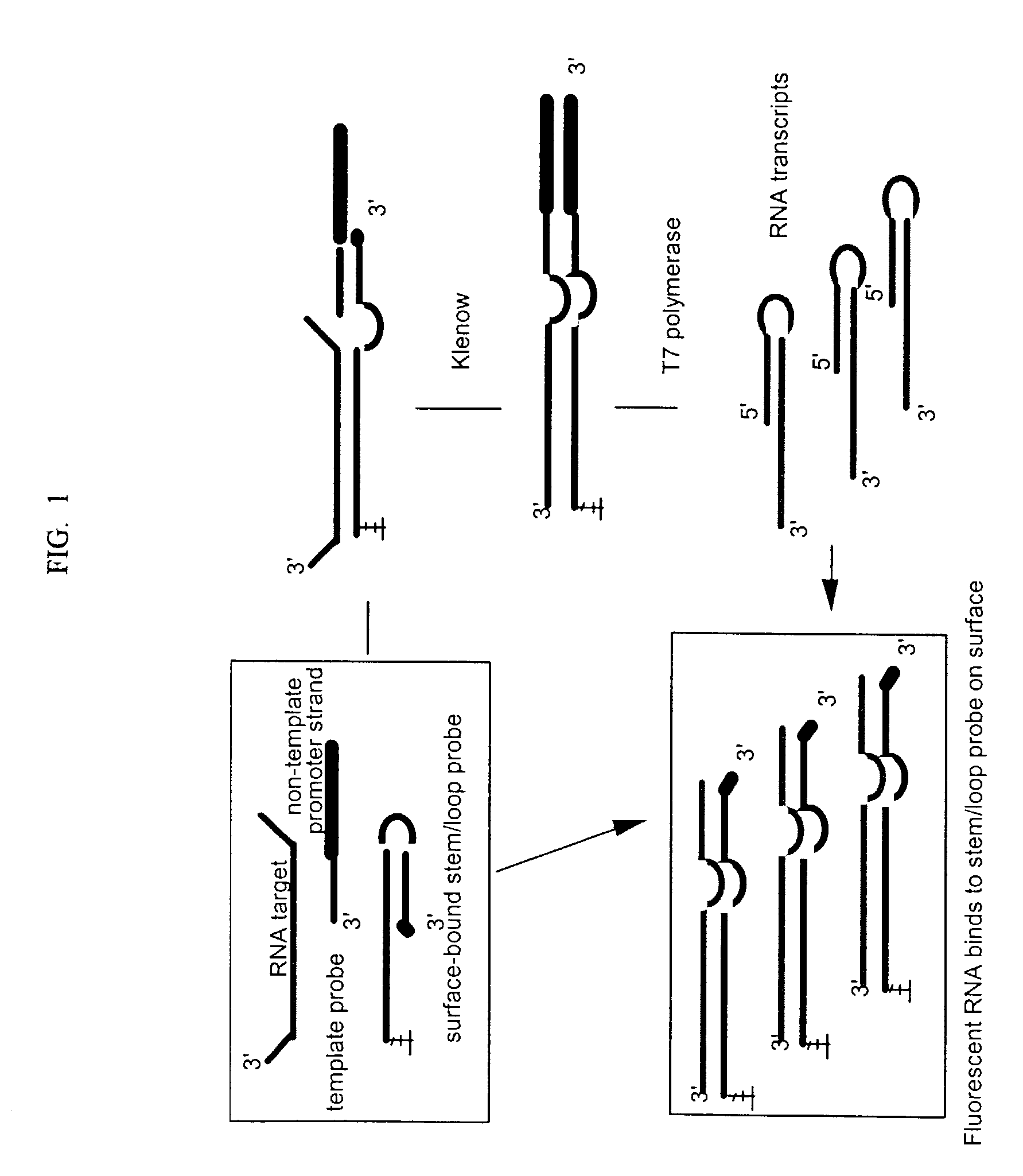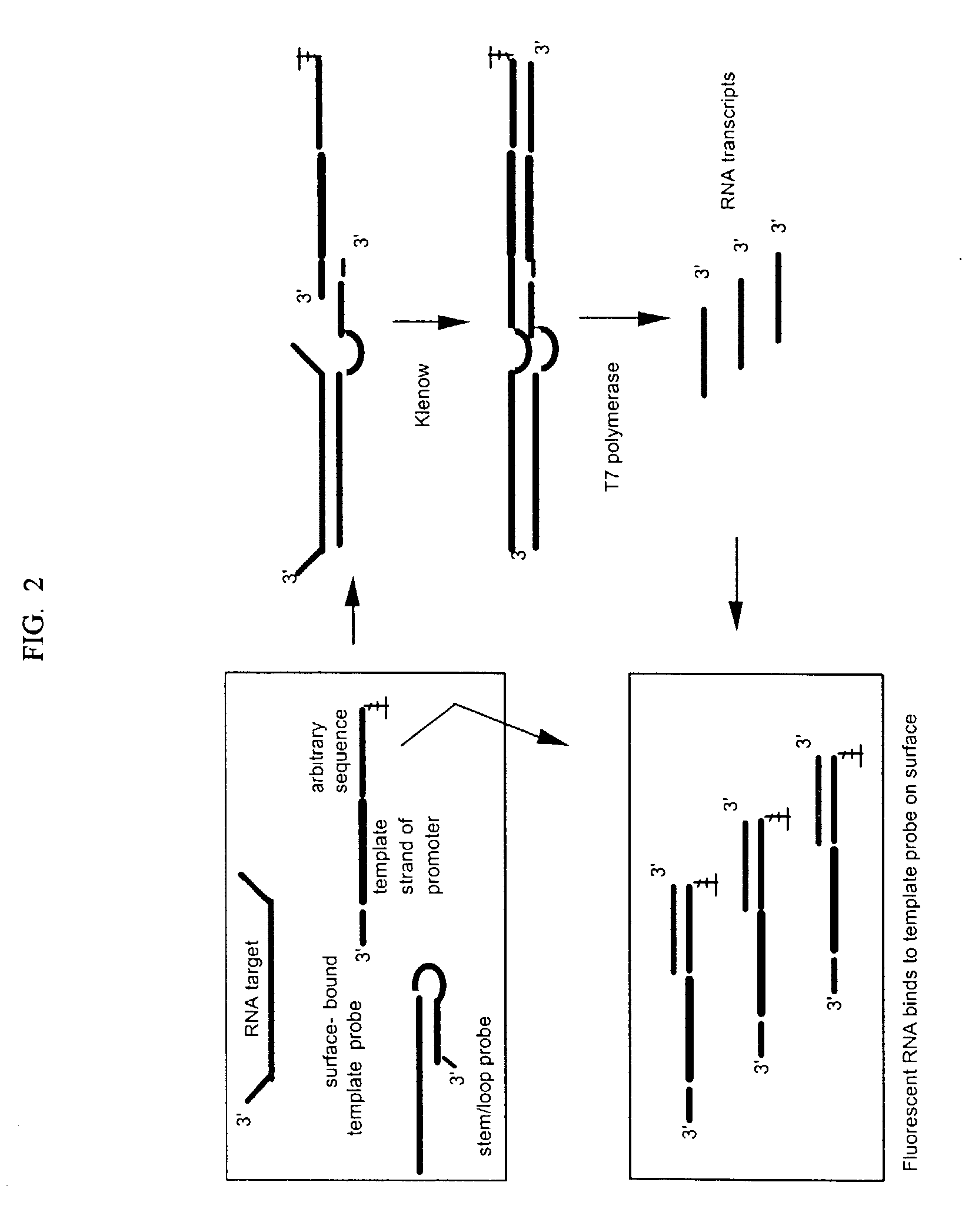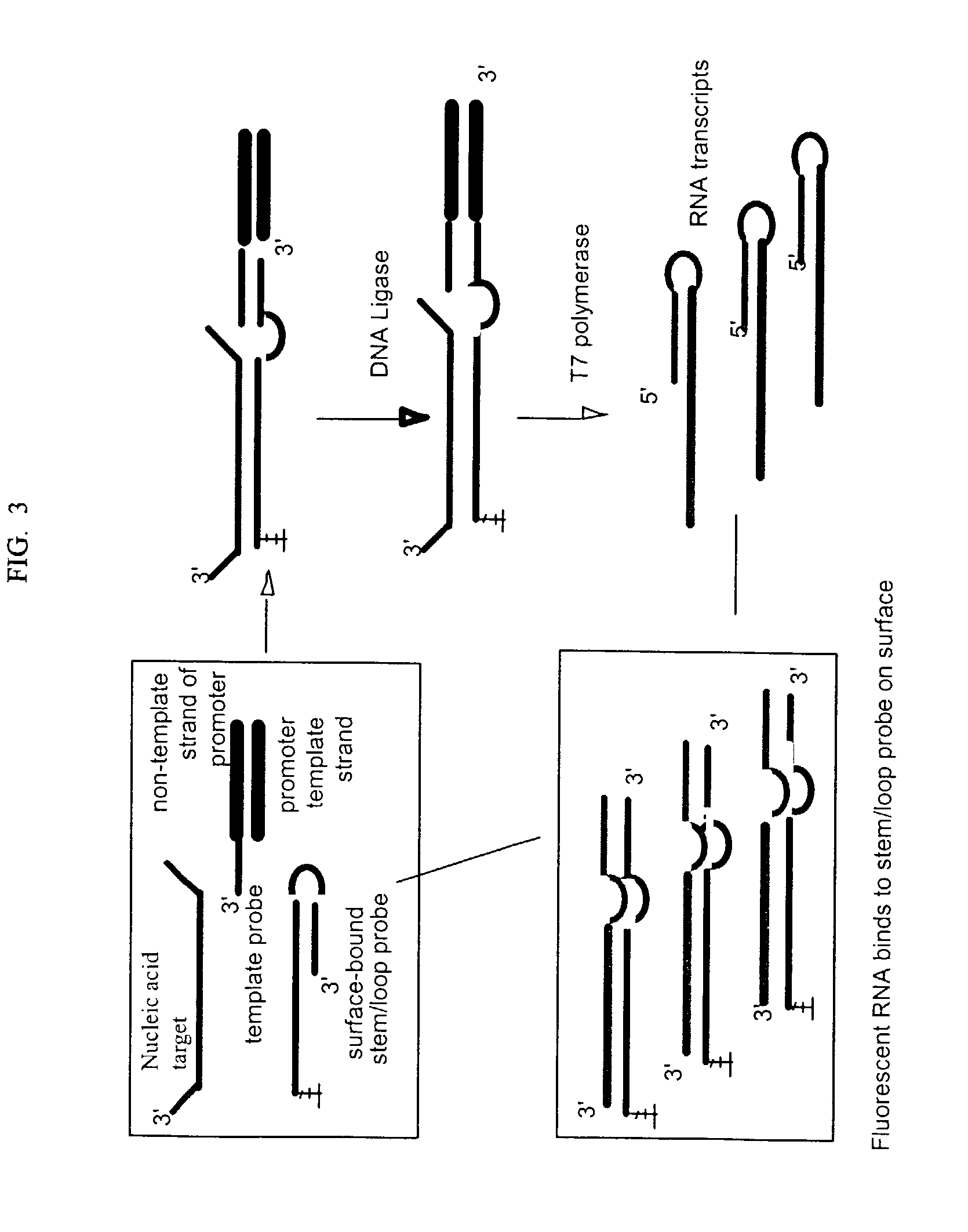Isothermal amplification in nucleic acid analysis
- Summary
- Abstract
- Description
- Claims
- Application Information
AI Technical Summary
Problems solved by technology
Method used
Image
Examples
Embodiment Construction
[0060] This example illustrates assays for a 359 nt RNA target (SEQ ID NO: 1) and an irrelevant 125 nt RNA control (SEQ ID NO: 2). A 59 nt stem / loop probe (SEQ ID NO: 3) was used that has a 39 base long strand at the 5'-end that is complementary to the target and comprised of a 24 base single stranded region, a 16 base short strand at the 3'-end that is complementary to the long strand except for a single non-complementary adenosine at the 3' end to prevent self extension, and a 4-base loop connecting the two strands. Alternatively a 59 nt linear control probe (SEQ ID NO: 4) was used that is identical to SEQ ID NO: 3 except that only the single stranded region of the long strand is complementary to the target. The duplex region of the long strand is replaced with poly A. A common 40 nt template probe (SEQ ID NO: 5) was used with either the stem / loop or linear control probe. The template probe has a 12 base sequence at its 3'-end that is complementary with...
PUM
 Login to View More
Login to View More Abstract
Description
Claims
Application Information
 Login to View More
Login to View More - R&D
- Intellectual Property
- Life Sciences
- Materials
- Tech Scout
- Unparalleled Data Quality
- Higher Quality Content
- 60% Fewer Hallucinations
Browse by: Latest US Patents, China's latest patents, Technical Efficacy Thesaurus, Application Domain, Technology Topic, Popular Technical Reports.
© 2025 PatSnap. All rights reserved.Legal|Privacy policy|Modern Slavery Act Transparency Statement|Sitemap|About US| Contact US: help@patsnap.com



